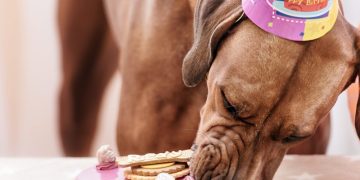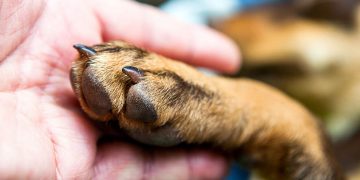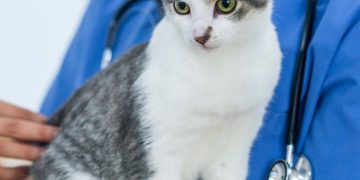We all know that our pets depend on us for their health and happiness. We also know that they can’t speak with us in human language to tell us when they’re feeling sick or in pain. That’s why it’s up to us to be proactive about our pet’s dental care. If you want your pet to live a long, healthy life and enjoy every minute of it, there are several steps you can take today. Here are eight tips for keeping your pet’s pearly whites clean:
Brush Your Pet’s Teeth Daily
Brushing your pet’s teeth is a great way to ensure they remain cavity-free. There are many types and brands of brushes available, but the most important thing is that you choose one that is comfortable for both you and your pet. Many pets don’t enjoy having their teeth brushed, so it’s important to be patient and gentle with them. Remember: practice makes perfect!
Professional veterinary dentistry recommends brushing at least two times per week, though daily tooth brushing is optimal for reducing the risk of developing dental plaque and periodontal disease (which can lead to tooth loss).
Feed the Right Food
Feeding your pet the right kind of food is an important part of caring for their dental health. The most obvious way to ensure that you’re feeding your pet the right type of food is to remember that, just like humans, dogs and cats need a diet rich in fiber and low in sugar. That means no table scraps!
Sugary foods are dehydrating to the teeth and can cause plaque build-up and other problems for pets with naturally soft teeth or digestive issues. On top of this, many veterinarians recommend avoiding moist treats altogether because they can be messy and make it harder for smaller pets to clean their mouths after eating them.
If you have a hard time finding healthy treats at the store, consider making them yourself using fruits or vegetables mixed with peanut butter as an alternative!
Dental Chews & Treats
Dental treats are another great way to keep your pet’s teeth and gums clean. These treats are specifically designed for dental health, so they’re made from natural ingredients, come in small and soft pieces, and will help clean your pet’s teeth while freshening their breath.
You can also find dental chews that remove plaque as well! These chews contain a special ingredient called chlorophyllin that helps break down the crystalized proteins in teeth.
Read More:
Use the Right Toothbrush and Toothpaste
- Use a soft-bristled brush. A soft-bristled brush won’t damage your pet’s teeth and gums, but it will get rid of any debris that might be stuck in their teeth.
- Avoid using human toothpaste. Human toothpaste is designed for people, not pets, so it can cause them to have gastrointestinal issues if they ingest too much of it while brushing their teeth. If you want to use a minty flavor or something special like dog-friendly peanut butter flavor to make your pet more excited about brushing his or her teeth (and believe me, I understand), some products are now made specifically for dogs that are pleasantly flavored with chicken or doggy treats!
- Make sure you’re using the right size of toothbrush for your pet! Smaller dogs need smaller toothbrushes than larger ones like Great Danes would need; use common sense when choosing which size would work best in each situation!
Regularly Examine Your Pet’s Mouth
Check your pet’s teeth regularly. How often you need to examine your pet’s mouth depends on their age, breed, health and dental history. It’s best to consult with a veterinarian or veterinary dentist on this matter.
Check for sores or lesions on the lips around their mouth and gums. If you find any unusual odors coming from the area, they may have an infection in their gums or teeth that needs treatment with antibiotics from a veterinarian. Also look for redness around the cheeks or chin; these are signs of inflammation or swelling due to infected tissue inside the mouth which could lead to abscesses forming as well as pain when eating which will cause your dog not wanting anything near them again!
Caring For Your Pet’s Teeth And Gums At Home: A lot of owners want to do everything possible when it comes time for brushing their pets’ teeth but there isn’t much research showing how effective grooming aids such as toothbrushes are at preventing dental disease – so why bother spending money on something that hasn’t been proven effective? Instead, try using treats like Greenies Chicken Flavor Dental Chews Dog Treats – 100 Count (Packaging May Vary). The unique “cavity-fighting ridges” contain ingredients like chondroitin sulfate plus vitamins C & E which help keep tartar buildup away while promoting healthy gums between cleanings.” These tasty treats come in assorted flavors including chicken flavor while helping fight plaque build up without causing any discomfort during use!
Regularly Schedule Cleanings With Your Veterinarian
- Recommendations for regular checkups:
- We recommend that you bring your pet in once a year for a dental cleaning. However, if you notice any changes in their health or behavior, such as excess drooling or difficulty chewing, it’s important to contact us right away so we can determine whether they need treatment sooner.
- What to expect at the appointment:
Your pet will be given anesthetic before any work is done on their teeth. Once the anesthesia has taken effect and your pet has fallen asleep, we will begin by removing any tartar buildup on the teeth using an ultrasonic scaler. After this is complete, we’ll polish each tooth with fine sandpaper and remove any plaque from between them using a special jet water stream called an oral irrigator (like those used by hygienists). We finish off with polishing using special paste applied directly onto each tooth surface for final polishing and removal of surface stains caused by bacteria build up over time which may have been missed during our initial cleaning session earlier that day; but don’t worry! It won’t hurt because no actual contact occurs between your doggy’s teeth during these last few steps–they’re completely dry when handled this way so no damage could possibly occur while they’re still asleep anyway!
Schedule an Annual Dental Exam Before Any Problems Occur
If you want to keep your pet’s teeth in tip-top shape, consider scheduling an annual dental exam.
As with humans, this can help catch problems early—before they become serious. Also like people, dental health is a crucial part of overall wellness and can often be used as an indicator for other conditions or diseases affecting your pet’s body. For example: A dog with bad breath may need antibiotics to treat an infection in its gums; a cat with tartar buildup will likely need oral surgery after being diagnosed with periodontal disease; and when a rabbit has discolored stools (a sign that it hasn’t been eating), it could mean that the small intestine has been irritated by something in its diet—which would require special medication from a veterinarian.
Besides helping you keep tabs on any potential issues that might arise over time, regular visits also give you opportunities for bonding with your furry friend—and vice versa!
Make it a habit to give your pet proper dental care.
Dental care is important for your pet’s health, and you can help prevent periodontal disease by brushing your cat or dog’s teeth regularly. You should brush your pet’s teeth at least once a week. It is best to start brushing their teeth as soon as they start developing their adult teeth at around 3 months old.
If you want to make brushing the most effective and easiest process possible, try using a toothpaste designed specifically for pets like PAWZ Natural Pet Toothpaste; this product features an all-natural formula that removes plaque while also providing breath freshening benefits!
Conclusion
All in all, maintaining your pet’s dental health is a critical aspect of their overall health. As with humans, the importance of teeth cannot be overstated. They allow us to chew our food and speak clearly. In addition to these basic functions, they also help prevent infections in the mouth and throat area which can spread through the body easily through our saliva flow or if there is any bleeding during brushing or cleaning procedures done by yourself or by others who care about animals as well as people (such as veterinarians). The tips provided here will help keep your pet’s smile healthy for years to come!

























